There are plenty of myths out there about cats. Cats always land on their feet. A cat’s purr means they’re happy. Cat eyes see in absolute darkness. And, finally, cats and water DON’T mix. None of those myths are true (believe it or not). Surprised? Of course, because everyone knows cats hate water. And while you’ll find plenty of felines out there (large and small) who want to avoid the liquid, it’s not true for every cat. Plenty of cats not only don’t mind water, they LOVE it. So, where did the misconception come from? And why don’t cats and water seem to mix? We’ll break everything down and solve the mystery.
Ancestral Felines
Scientists and cat lovers alike believe cats get their aversion to water from the first felines. The domestic cat’s original ancestor came from an African wild cat. This little feline scoped out sources of water for drinking, but that’s about it. Like the lions and leopards found throughout the continent, the wild cat didn’t want to hang around rivers, Why? Easy – rivers mean crocodiles. If you take a dip in a body of water in those arid regions, you risk becoming a snack for one of the toothy predators. So swimming wasn’t a big priority for feline ancestors.
“One reason for the aversion may have something to do with the fact that the feline species evolved in arid desert climes. Throughout their early history, cats were not exposed to rivers, lakes, and rain, and, as a result, were not as familiar with water as some other evolving species.”
~Canadian Veterinary Medical Association
However, in OTHER parts of the world, cats swim. The Asian fishing cat even sports webbed paws to help it cut through the water. And tigers ADORE swimming. They have the same webbed toes to improve their speed in the water. When temperatures climb, they look for rivers to cool off.
That means cats and water DO have some basis in evolution. It just depends on where you look in the world.
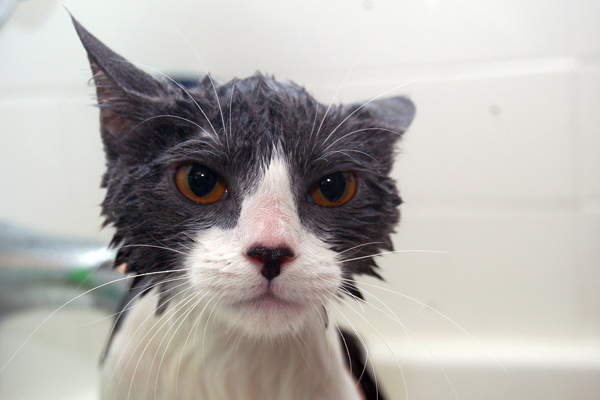
Cats and Water: Solving the Dislike
Odds are, your cat turns their nose up at the sight of a tub filled with water. They’d rather sit through a nail-trimming session than put their tail in that wet stuff. But why? You see your feline patting at the surface of their water bowl. They might even dance their toes over the bathtub (when you’re not supposed to be looking, of course). If they hated the water so much, why would they swat at the faucet or play in the water with their paws? It seems counterintuitive.
When you consider cat biology, those forays into the watery world make sense. Cats DO catch fish. And where do fish live? Obviously, you don’t have fish in their water bowl or your bathroom (at least, I hope not). But the light catching against the water mimics the pattern of a fish in a stream. Your cat’s brain starts thinking, “There’s potential prey in there.” So they pat the water, chasing the light over the surface. And, really, there’s a BIG difference between putting toes in the water and submerging their entire body.
The same logic works with running water. A faucet or fountain produces a magical “siren call.” Your cat knows that means a source of fresh, clean, and SAFE water. So their brain drives them forward. It’s one of the best arguments for purchasing an automatic water bowl; it promotes feline urinary health. No, you probably didn’t expect your cat to put their FOOT in it, but it’s part of their exploration of the sound.
But why won’t they extend that interest to a swim? There are a lot of reasons, and they make sense when you think about them.
Cats and Water: The Fur Problem
Unlike many dog breeds, only the very top layer of a cat’s fur is water-resistant. As soon as they end up submerged, they’re water-logged. And wet fur presents problems:
- Weight: Put on all of your clothes, then jump into a pool. That’s what it feels like when you mix cats and water. They end up HEAVY. It’s uncomfortable.
- Coordination: The weight causes your cat to fumble around in the water. They don’t have their usual grace. It makes them vulnerable (even if they’re safe at home).
- Cold: Have you heard of the Polar Bear Club? When you get soaked, you lose body heat FAST. Sure, your cat’s inside, but it makes a BIG difference to them. They naturally have a higher temperature than we do, and now they’re COLD.
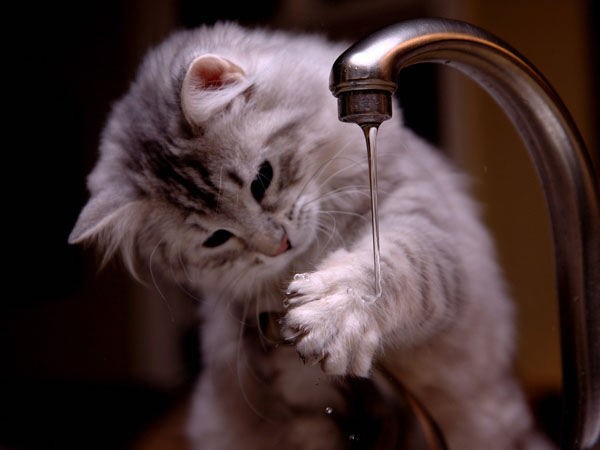
Exceptions to the Rule
Obviously, hairless cats don’t have these problems. They also don’t usually mind water. And they’re not the only ones! A few other cat breeds have coats that ARE waterproof. Since they don’t suffer from the waterlogging problem, they LIKE water.
Abyssinians came across to Europe via ships in the Mediterranean. Those lengthy voyages produced a breed of cat that loves the water. True, they’ll start by toe-testing everything first (have to make sure the temperature’s “just right”). But once they’re satisfied, they’ll happily dive right in. I had a part-Abyssinian cat, and I was never surprised to look down and find she’d hopped in the shower with me.
Maine Coons have a completely water-resistant coat. They’re cats who ADORE water. In fact, you might have to close them OUT of the bathroom unless you want to share shower time. They were a favorite with sailors, serving as pest control during sea crossings. That hefty coat also makes them fans of playing in the snow.
Turkish Vans (and Turkish Angoras) are known as “swimming cats.” Most owners actually install swimming pools for their felines! They have a fully waterproof coat that doesn’t hang onto the water. The breed comes from the Lake Van region of Turkey. In summer, they shed their heavy winter coat, making it easier for them to swim in the lake and hunt for fish.
Cats and Water: Smell
Cat noses may not compare to dog noses, but they’re still better than ours. We don’t necessarily detect anything when we run a bath (unless you added soap or bath bombs), but your feline? They can smell all of the chemical additives in the tap water that keep us safe. Cats and water CAN be a simple scent-aversion. They have no desire to smell like anything other than their natural scent. Dunking in the water will erase all of the natural pheromones they’ve worked hard to spread around the house (and on themselves).
If you ever want to test this, pick up some distilled water from the store. Distilled water has all of the minerals and chemicals removed. Pour a glass of the distilled water, then a glass of tap water. Now, blindfold yourself and smell each glass in turn. (Ideally, have someone mix the two so you don’t know which is which) Without knowing which glass holds which water, you WILL smell those subtle chemicals – even with a human nose.
Cats and Water: Fear
The myth of cats hating water probably came from the most basic instinct out there: fear. How would you feel if someone snatched you up and dunked you into a tub of water without warning? Wouldn’t you feel a touch stressed? If a cat’s first experience with liquid is NEGATIVE, they’ll continue to regard it with dislike. And this is often the case.
Many kittens need flea baths. While necessary for their health, it isn’t always the best first impression with water. They may be in a new environment, away from their litter and mother, and feeling sick. And now they’re in a slippery tub with water pouring on them? Terrifying!
And if you use a spray bottle to correct unwanted behaviors, you inadvertently reinforce water as a BAD thing. In your feline’s mind, cats and water will NEVER mix. It’s why other cat deterrents are recommended.
“Like anything else unfamiliar, the initial reaction may be fear. This fear reaction can be exacerbated if owners have used a squirt gun or spray bottle to dissuade cats from being on surfaces such as furniture or the kitchen counter.”
~Jennifer Kasten, DVM
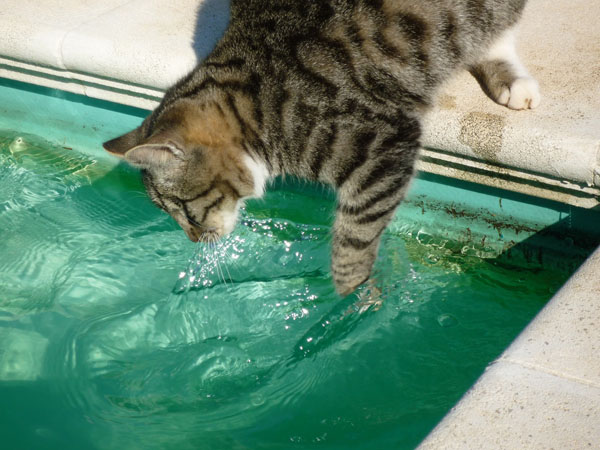
Do ALL Cats Hate Water?
That said, cats and water AREN’T the enemies myth would have you believe. Even outside the swimming (and hairless) breeds, plenty of cats enjoy taking a dip. When it’s THEIR choice, they don’t seem to mind so much. They decide whether they want to cope with the consequences of “wet,” making them feel more comfortable. The control resides with them, and that makes the biggest difference.
I have two cats that don’t mind the water. Squeak (my middle cat) has his own life jacket. Due to his cerebellar hypoplasia, he needs a little help maintaining his balance, but he happily swims around in our friend’s pool (chemicals or no). We make sure to rinse him off really well afterward so he doesn’t ingest any chlorine. And then he usually spends time in the sun, grooming the water out of his fur and staying warm.
And then there’s Tonks (the “baby”). That bugger hasn’t minded the water from the moment she first fell in the bathtub. (Something you would THINK would have turned her off the water) Nope, she’s remained fascinated. She pushes into the shower and joins you in the bathtub. (There’s no such thing as a relaxing soak in our house)
Myth Busted!
As with any myth, there’s usually a tiny grain of truth embedded in the center. Plenty of cats dislike water for various reasons. And it’s perfectly reasonable if your cat prefers to give you a wary eye from the other side of the bathroom. Given enough time, they may come around. This goes double if you give them a chance to explore and make the decision for themselves. Or they may decide cats and water aren’t meant to be. Every cat is different.
But deciding ALL cats hate water? Nope – just another silly feline myth.




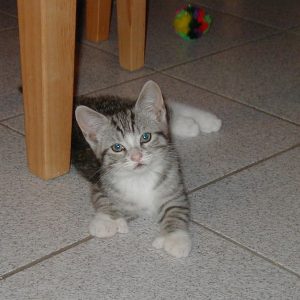
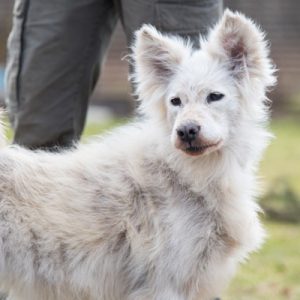





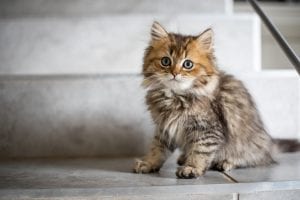

No comment yet, add your voice below!